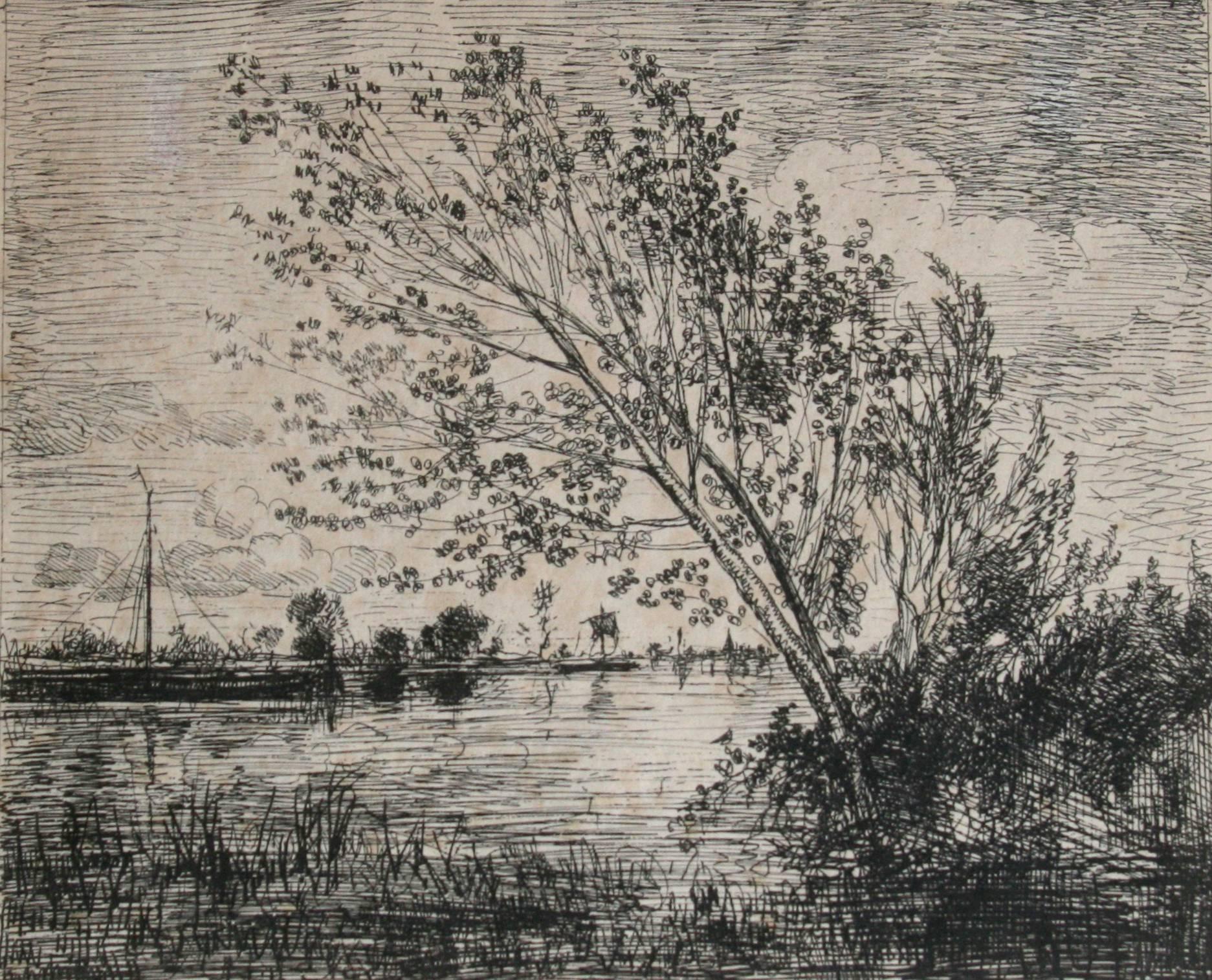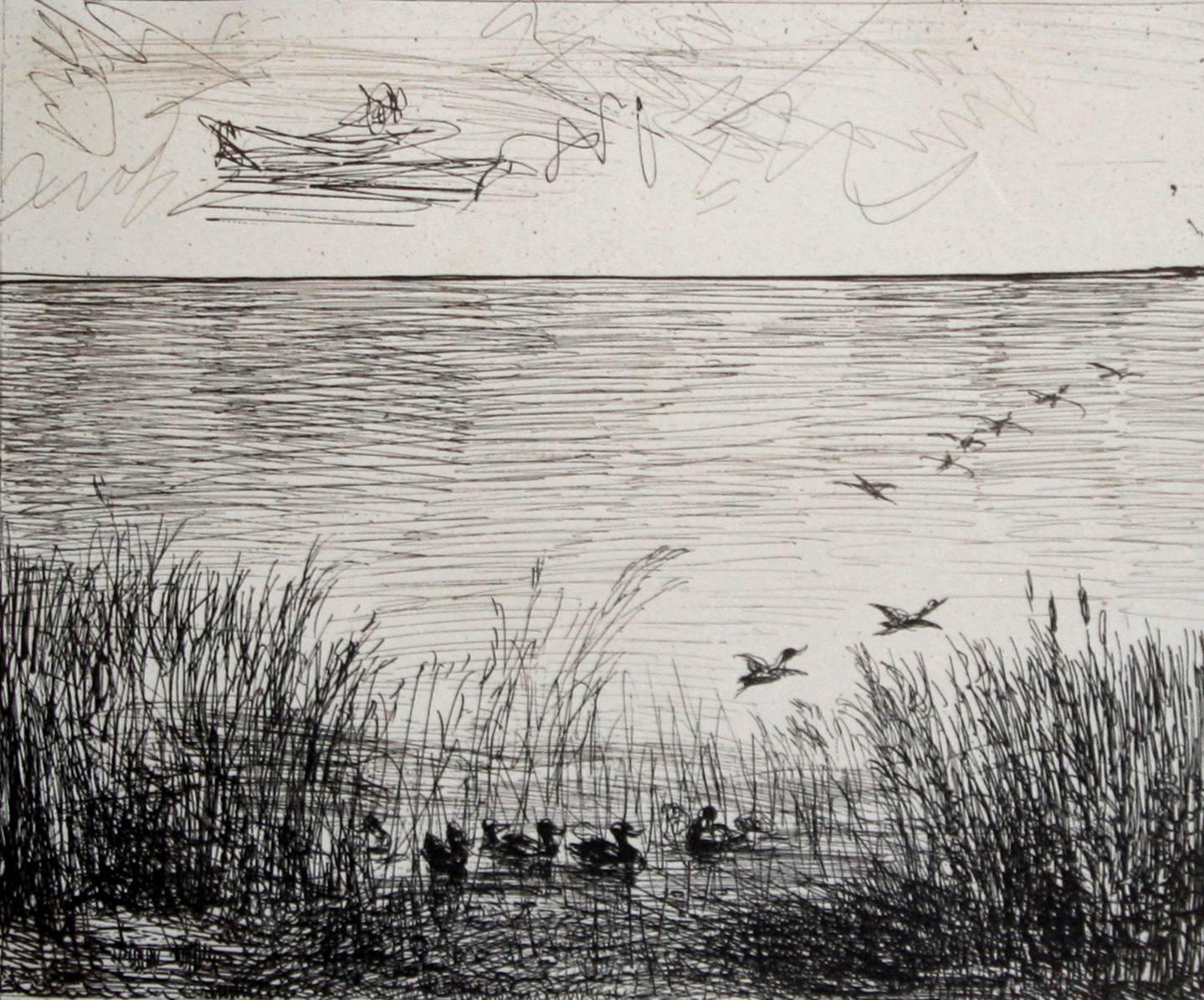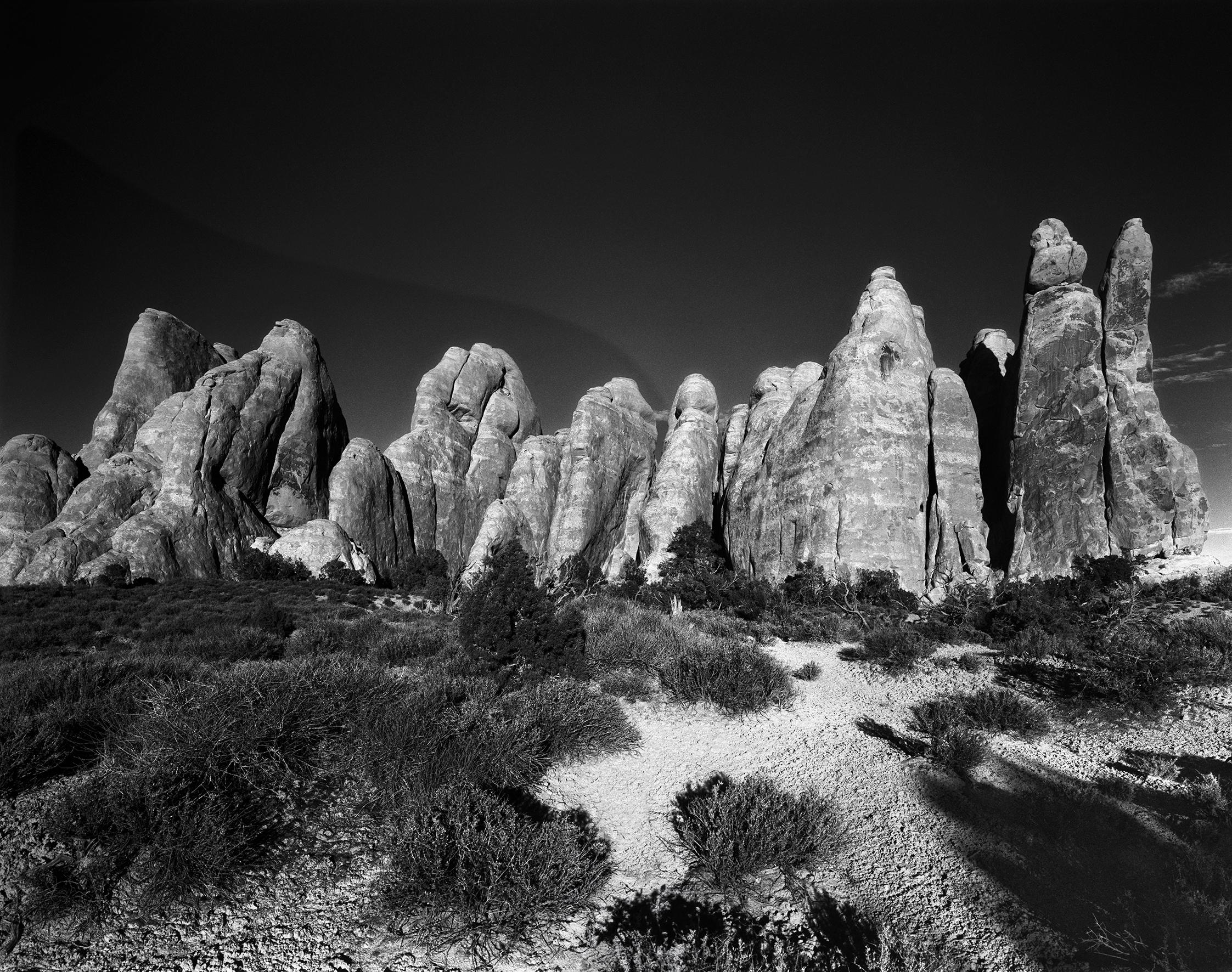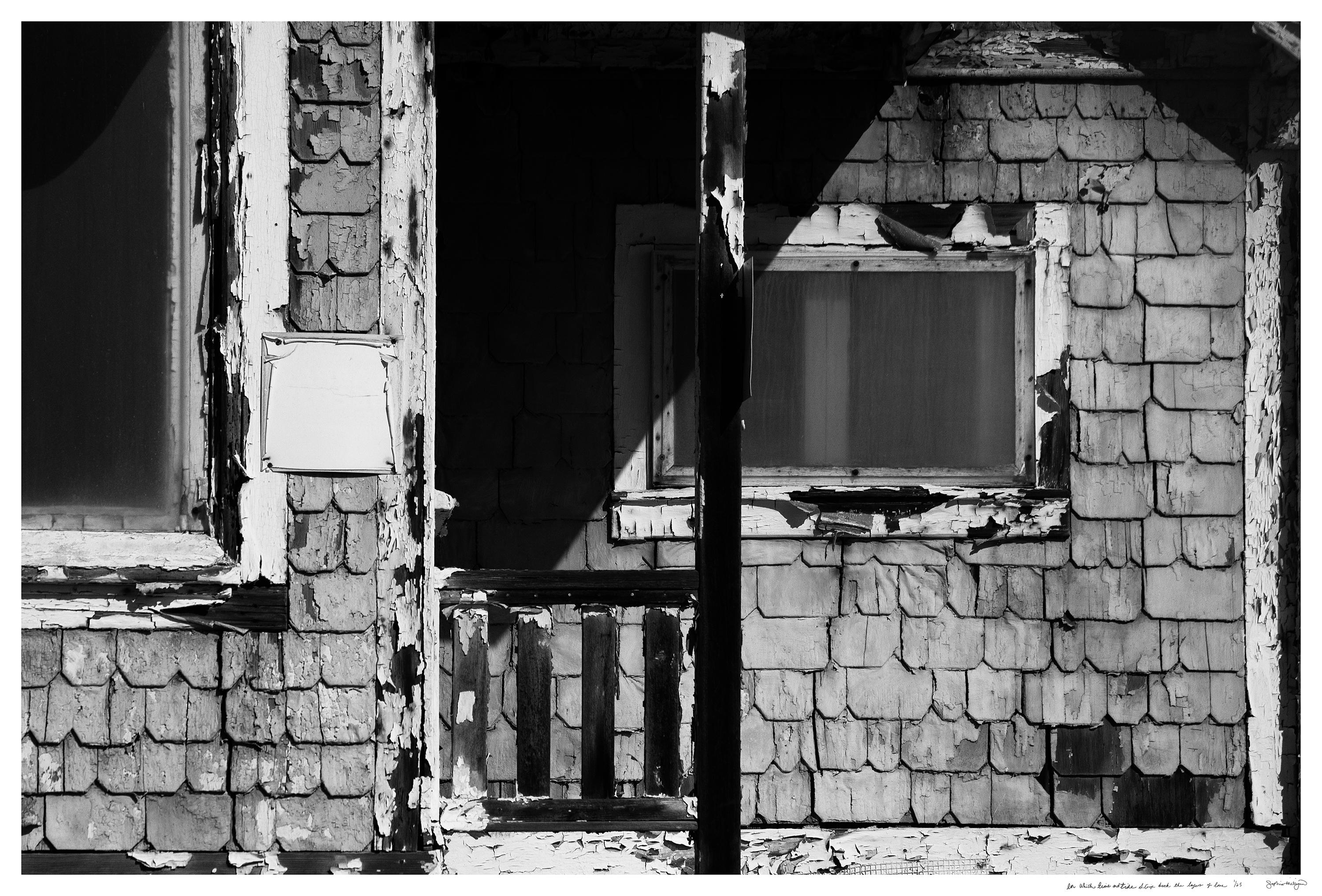Items Similar to La Machine hydraulique (The Hydraulic Machine).
Want more images or videos?
Request additional images or videos from the seller
1 of 9
Charles François DaubignyLa Machine hydraulique (The Hydraulic Machine).1862
1862
About the Item
La Machine hydraulique (The Hydraulic Machine). 1862. Original cliché-verre. Delteil, Melot 147. Delteil 147. 8 3/8 x 13 1/2 (sheet 11 x 14). Edition 150, #85. A posthumous impression from the 1921 edition of 150 printed in Paris by Sagot-Le Garrec on photo-sensitive vellum paper, with their violet seal verso (Lugt 1766a). Signed in the plate. A fascinating historical image. Housed in a 16x 20-inch archival mat, suitable for framing.
Benoît Fourneyron (October 31, 1802 - July 31, 1867) was a French engineer, born in Saint-Étienne, Loire. Fourneyron made significant contributions to the development of water turbines. He was educated at the École Nationale Supeérieure des Mines de Saint-Étienne, a nearby engineering school that had recently opened. After he graduated in 1816, he spent the next few years in mines and ironworks. Around this time, a number of French engineers, including some of Fourneyron's former teachers—were starting to apply the mathematical techniques of modern science to the ancient mechanism called the waterwheel.
For centuries, waterwheels had been used to convert the energy of streams into mechanical power, mostly for milling grain. But the new machines of the Industrial Revolution required more power, and by the 1820s there was enormous interest in making waterwheels more efficient.
Using the proposal of a former teacher (Claude Burdin) as a guide, Fourneyron built in 1827, at age of 25, his first prototype for a new type of waterwheel, called a "turbine". (The term turbine is derived from the Latin word for a spinning top). In Fourneyron's design, the wheel was horizontal, unlike the vertical wheels in traditional waterwheels. This 6 horsepower (4.5 kW) turbine used two sets of blades, curved in opposite directions, to get as much power as possible from the water's motion. Fourneyron won a 6,000 franc prize offered by the French Society for the Encouragement of Industry for the development of the first commercial hydraulic turbine.
Over the next decade, Fourneyron built bigger and better turbines, learning from his mistakes after each new model. By 1837, Fourneyron had produced a turbine capable of 2,300 revolutions per minute, 80 percent efficiency, and 60 horsepower, with a wheel a foot in diameter and weighing only 40 pounds (18 kilograms). Besides its more obvious advantages over the waterwheel, Fourneyron's turbine could be installed as a horizontal wheel with a vertical shaft. It achieved immediate international success, powering industry in continental Europe and in the United States, notably the New England textile industry. But the real significance of the invention did not emerge until 1895, when Fourneyron turbines were installed on the American side of Niagara Falls to turn generators for electric-power production.
Fourneyron perceived the potential of steam-driven turbines, but his attempts to make a satisfactory steam turbine were thwarted by the inadequacy of available materials and workmanship.
Translated from French, 'cliché-verre' means glass picture. The 19th-century French painters Corot, Millet, Daubigny, and others, used this method of making pictures, which involves creating a handmade negative. These artists took pieces of flat glass, smoked them with a lit candle, and drew images in the soot-covered surface with a sharp pointed instrument. Then they would place the glass over a sheet of photographic paper and expose it to light.
When light passes through the clear parts of the glass that is scratched, it produces a line drawing in black on a white background. Contact prints made from these negatives have a wonderful sense of belonging to the realms of both drawing and photography.
The shot glass holds, by its very nature, both drawing, printmaking and photography. But it is above all a process of multiplication of the image based on the early days of photography.
The cliché-verre is a printing process by photographic means, from a negative to done manually and by glass artist. The plate is first coated with a thick layer of collodion where the artist draws with a tip about it. The route passes through the translucent glass.
The draw is obtained by the action of light passing through the glass and mark the photo-sensitive paper, which is then found and fixed.
This technique, midway between printmaking and photography was invented in the 1850s by Constant Dutilleux and his son Charles Desavary.
- Creator:Charles François Daubigny (1817 - 1878, French)
- Creation Year:1862
- Dimensions:Height: 16 in (40.64 cm)Width: 20 in (50.8 cm)Depth: 0.5 in (1.27 cm)
- Medium:
- Movement & Style:
- Period:
- Condition:
- Gallery Location:Storrs, CT
- Reference Number:1stDibs: LU33523764611
Charles François Daubigny
Charles-François Daubigny, (15 February 1817 – 19 February 1878), Daubigny was born in Paris, into a family of painters and was taught the art by his father Edmond François Daubigny and his uncle, miniaturist Pierre Daubigny. Initially Daubigny painted in a traditional style, but this changed after 1843 when he settled in Barbizon to work outside in nature. Even more important was his meeting with Camille Corot in 1852 in Optevoz (Isère). On his famous boat Botin, which he had turned into a studio, he painted along the Seine and Oise, often in the region around Auvers. From 1852 onward he came under the influence of Gustave Courbet. In London he met Claude Monet, and together they left for the Netherlands. Back in Auvers, he met Paul Cézanne, another important Impressionist. It is assumed that these younger painters were influenced by Daubigny. Daubigny's finest pictures were painted between 1864 and 1874, and these for the most part consist of carefully completed landscapes with trees, river and a few ducks. It has been said that when Daubigny liked his pictures he added another duck or two, so that the number of ducks often indicates greater or less artistic quality in his pictures. He was named by the French government as an Officer of the Legion of Honor. Daubigny died in Paris in 1878.
About the Seller
5.0
Recognized Seller
These prestigious sellers are industry leaders and represent the highest echelon for item quality and design.
Platinum Seller
These expertly vetted sellers are 1stDibs' most experienced sellers and are rated highest by our customers.
Established in 1977
1stDibs seller since 2016
699 sales on 1stDibs
Typical response time: 1 hour
Associations
International Fine Print Dealers Association
- ShippingRetrieving quote...Ships From: Storrs, CT
- Return PolicyA return for this item may be initiated within 3 days of delivery.
More From This SellerView All
- Le bouquet d'aunes ((The Clump of Alders)By Charles François DaubignyLocated in Storrs, CT. 1862. Original cliché-verre. Counterproof. Delteil, Melot 145. 6 1/2 x 8 3/4 (image and sheet). Edition 150, #71. Posthumous impression from the 1921 edition of 150 printed in Pari...Category
Mid-19th Century Barbizon School Black and White Photography
MaterialsPhotographic Paper
- Le marais aux canards (Marsh with Ducks).By Charles François DaubignyLocated in Storrs, CT1862. Original cliché verre. Delteil, Melot 133. 6 1/2 x 7 7/8 (image and sheet). Edition 150, #85. Posthumous impression from the 1921 edition of 150 printed in Paris by Sagot-Le ...Category
Mid-19th Century Barbizon School Landscape Photography
MaterialsPhotographic Paper
- Angled ReflectionsBy Deirdre AllinsonLocated in Storrs, CTBlack and white photograph printed on silver gelatin Ilford Galerie fiber in an 18 x 24-inch archival mat. The print is signed, titled and numbered in pencil. Image size is 16 x 2...Category
21st Century and Contemporary Contemporary Black and White Photography
MaterialsPhotographic Paper
- Unexpected SymmetryBy Deirdre AllinsonLocated in Storrs, CTBlack and white photograph on a ChromaLuxe metal panel with a UV coating bonded to substrates that include 0.45" metal. ChromaLuxe has superior fade, moisture, stain and scratch resi...Category
21st Century and Contemporary Contemporary Black and White Photography
MaterialsMetal
- Through the Bridge, A view of Manhattan and Brooklyn through the Manhattan BridgBy Deirdre AllinsonLocated in Storrs, CTBlack and white photograph 24 x 36. (Matted and framed.) Edition: 50 silver gelatin photos printed on Ilford Galerie fiber-based digital silver pap...Category
21st Century and Contemporary Contemporary Black and White Photography
MaterialsMetal
- Morning GlowBy Deirdre AllinsonLocated in Storrs, CTBlack and white photograph printed on silver gelatin Ilford Galerie fiber in an 18 x 24-inch archival mat. The print is signed, titl...Category
21st Century and Contemporary Contemporary Black and White Photography
MaterialsPhotographic Paper
You May Also Like
- Sand Dune Arches - black and white rock arch photography, limitd edition of 10Located in London, GB'Sand Dune Arches' Utah, USA, 2023 Limited edition of 10. Photograph shot using mid-century large format film camera Linhof. Printed on archival Hahnemühle Photo Rag Baryta paper...Category
21st Century and Contemporary Contemporary Black and White Photography
MaterialsFilm, Photographic Film, Photographic Paper, Giclée
- Sand Dune Arches - black and white rock arch photography, limitd edition of 20Located in London, GB'Sand Dune Arches' Utah, USA, 2023 Limited edition of 20 Photograph shot using mid-century large format film camera Linhof. Printed on archival Hahnemühle Photo Rag Baryta paper....Category
21st Century and Contemporary Contemporary Black and White Photography
MaterialsFilm, Photographic Film, Photographic Paper, Giclée
- 'Falls' Limited edition photograph triptych. Yosemite Stone Water Tree TextureBy Sophia MilliganLocated in Penzance, GB'Falls' Archival photographic triptych. Limited Edition of 25. Hand signed and numbered, unframed. _________________ Rooted in the richly textured rock face, the humble pines provide a sense of scale to the vastness of Yosemite falls. Cascading water, softening the sharp edges of time...Category
2010s Contemporary Landscape Photography
MaterialsPhotographic Paper
- 'Time and Tide' Limited edition photograph. California Beach CottageBy Sophia MilliganLocated in Penzance, GB'In which Time and Tide Strip Back The Layers of love' Limited Edition (1 of 25) Archival Photograph. Unframed. _________________ Crystal Cove, Orange County, California, an empty beach cottage...Category
2010s Contemporary Landscape Photography
MaterialsArchival Paper, Photographic Paper
- Tropical Breeze No2By Jessica NugentLocated in New York, NYABOUT THIS PIECE: "My photographs are a personal collection of moments that reveal my most genuine and beautiful depictions in the world around us. Preserving precious moments in tim...Category
2010s Landscape Photography
MaterialsPhotographic Paper
- Tropical Breeze No1By Jessica NugentLocated in New York, NYABOUT THIS PIECE: "My photographs are a personal collection of moments that reveal my most genuine and beautiful depictions in the world around us. Preserving precious moments in tim...Category
2010s Landscape Photography
MaterialsPhotographic Paper
Recently Viewed
View AllMore Ways To Browse
The Machine
Used Machines
White Midcentury Light
Glass With Black Base
Antique Black Glass
Black Antique Glass
Glass Light With Black
Antique White Glass
White Antique Glass
White Glass Antique
Antique Frame White
Antique White Frame
A Black Seal
Antique White Light
Machine Base
Time Machine
Black Plate Set
Black And White Mid Century Light





